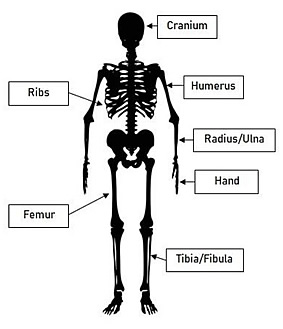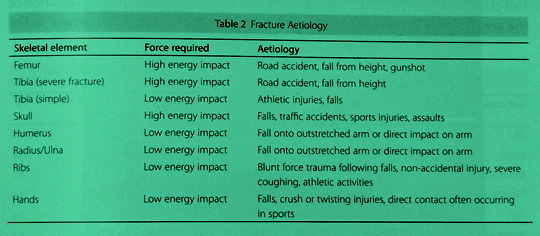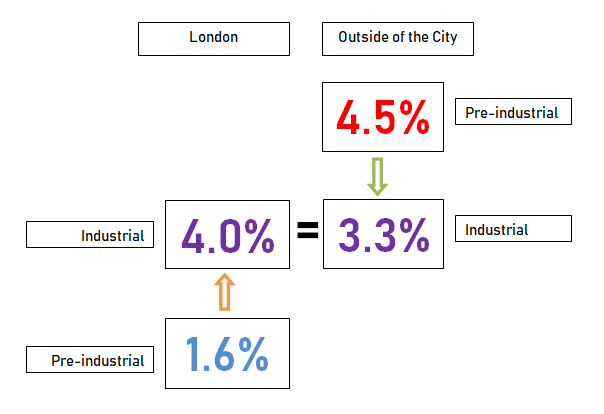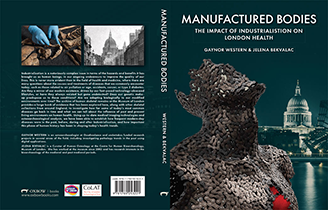Fractures in the human skeleton
Comparing fractures in different populations can tell us about the relative risk of physical trauma that different groups were exposed to, based on age, sex and social status.
We also need to consider that fractures to different bones in the skeleton can have different causes and might be related to different types of activities. Fractures can be considered to result from low impacts or high impacts, for example:
Although we might think that urban centres are much more hazardous than rural areas, looking at our data we found that rates of fractures overall were very similar, mainly due to the similar levels of risks involved in manual labour, traffic accidents, sporting injuries and combat.
However, what we can see is that while the rate of fractures stays more or less the same in rural towns and villages before and during industrialisation, the transformation of London from a Royal administrative centre to a metropolitan hub has led to a significant increase in fractures. When we look more closely, the increase is mainly in fractures to the ribs and hands.
Rib fractures are usually caused by a direct blow to the chest, either from a fall or by being struck. Hand fractures are similarly caused by a direct blow or crushing injury.
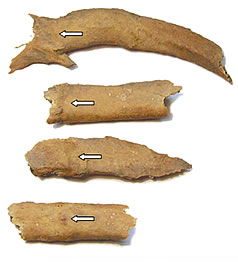
Multiple rib fractures (pleural surface) healed, SK [906] old adult male, Industrial non-metropolitan (Ossafreelance)
Before industrialisation, these types of fractures were infrequent in London, though they were commonplace in rural towns and villages outside the City. During industrialisation, increasing numbers of low status males had a much higher risk of these injuries due to their poor working conditions and labour intensive jobs. Low status females were also at more risk than high status females in industrial London, but males suffered almost twice as many fractures than females.
A similar pattern was reflected in our sites outside of the City too. In rural settlements such as Upton-on-Severn, Stratford-upon-Avon and Fewston in Yorkshire, rib fractures were much higher than in more urban settlements such as North Shields and Swinton. These rural settlements had large numbers of agricultural workers and were more exposed to risk of rib fractures. Cranial trauma fell significantly during the Industrial period in rural towns and villages but there was no significant difference to the presence of sharp-force trauma to the cranium in any of the groups at any time.
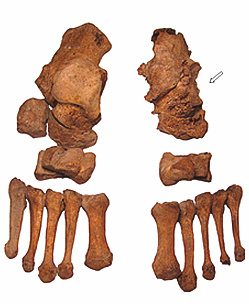
Impact fracture to the left ankle (calcaneus and talus) in SK [8010], old adult male, Upton-on-Severn, Worcestershire. Note the secondary disuse atrophy of the left metatarsals. Right ankle normal. (Ossafreelance)
In comparison, there were relatively fewer fractures in the larger, more robust bones of the leg or arm in any of our skeletal groups. This is somewhat different today.








